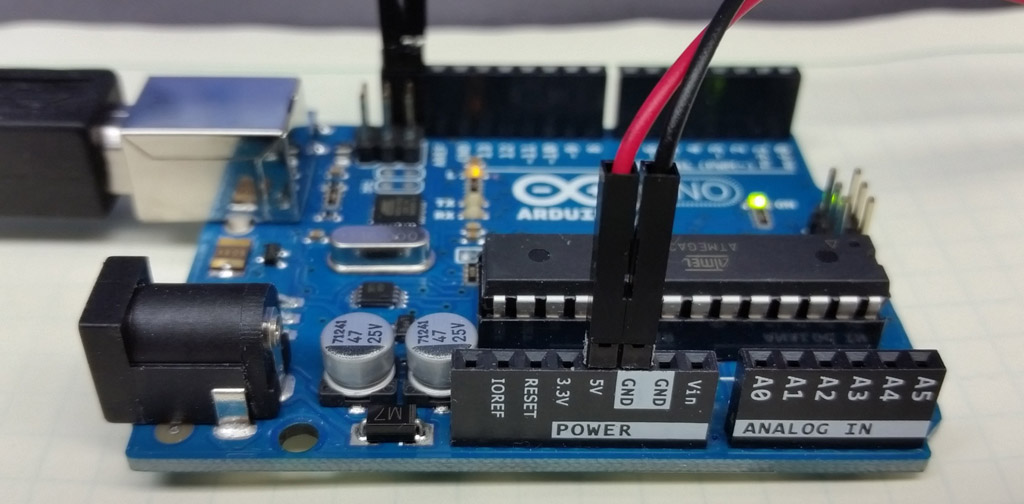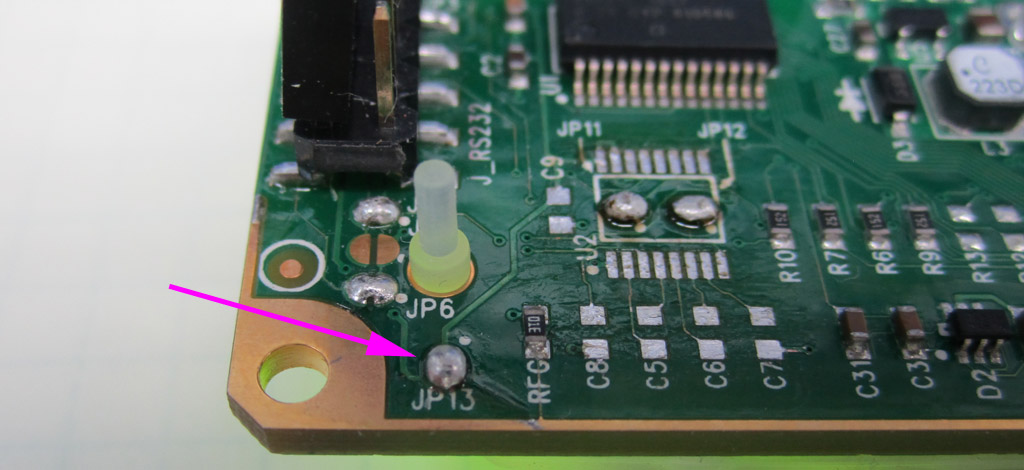CF Tech
Administrator
I have been working a bit with the Arduino Uno, and decided to connect it to a CFA-533 I2C LCD module.
ELECTRICAL CONNECTIONS
On the Arduino side you simply need to grab +5v, GND, SDA (I2C Serial DAta) and SCL (I2C Serial CLock). We used a few wire jumpers out of a WR-JMP-Y40 and standard male-to-male headers to make the connection:


On the I2C LCD side, all the connections are made to the CFA533's 10-pin connector (ref: CFA533 I2C datasheet). The jumpers push on directly with no fuss:

Check to make sure that JP13 is closed, so the module can get its 5v power from the Arduino:

Now you are ready to connect your PC's USB cable to the Arduino. Since the LCD gets its power from the Arduino, the LCD will instantly power up and show its boot screen:

SOFTWARE
On the software side of things, we have sample a CFA-533 I2C project for the Arduino: I2C_533_Test.ino
The project will run a couple of simple demos. Here is a picture of the bar graph demo:

It is easy for you to use the functions included in the .INO file to write text to the display, read the keys or any other function supported by the CFA-533.
Sample to write text to the display:
Sample code to read the keys:
Please let us know if you have any questions about the connections or software.
ELECTRICAL CONNECTIONS
On the Arduino side you simply need to grab +5v, GND, SDA (I2C Serial DAta) and SCL (I2C Serial CLock). We used a few wire jumpers out of a WR-JMP-Y40 and standard male-to-male headers to make the connection:


On the I2C LCD side, all the connections are made to the CFA533's 10-pin connector (ref: CFA533 I2C datasheet). The jumpers push on directly with no fuss:

Check to make sure that JP13 is closed, so the module can get its 5v power from the Arduino:

Now you are ready to connect your PC's USB cable to the Arduino. Since the LCD gets its power from the Arduino, the LCD will instantly power up and show its boot screen:

SOFTWARE
On the software side of things, we have sample a CFA-533 I2C project for the Arduino: I2C_533_Test.ino
The project will run a couple of simple demos. Here is a picture of the bar graph demo:

It is easy for you to use the functions included in the .INO file to write text to the display, read the keys or any other function supported by the CFA-533.
Sample to write text to the display:
Code:
cfPacket->writeText(0,0, "Hello World", 11);Sample code to read the keys:
Code:
uint8_t
keys_down;
uint8_t
key_presses;
uint8_t
key_releases;
. . .
//Ask the module what is happening with the keys
cfPacket->getKeys(&keys_down,&key_presses,&key_releases);Please let us know if you have any questions about the connections or software.
Looking for additional LCD resources? Check out our LCD blog for the latest developments in LCD technology.

